Belsize ward profile
A summary of Belsize ward in the North neighbourhood of Camden

Introduction
This is a summary profile of Belsize in the North neighbourhood of Camden. It includes data on the neighbourhood’s demography, levels of deprivation, and key health indicators such as life expectancy and prevalence of long-term conditions.
Demography
Population
The London Borough of Camden has approximately 219,900 residents according to the latest population projections. Of this total, 12,600 reside in Belsize, making it the ward with the fifth most number of residents. There are 6,700 female residents and 5,800 male residents in Belsize.
Age
Children and young people (0-24 years old) make up 24.48% of the population of Belsize which is less than Camden overall (30.85%). Additionally, the percentage of older adults aged 65+ years is 12.99% compared to 12.02%.
Ethnicity
The following data uses the Office of National Statistics (ONS) ethnicity classifications. When looking at the broader ethnicities (e.g. ‘Asian’ instead of ‘Asian: Indian’), the most frequently reported ethnicity in Belsize is White (71.95%), which is higher than Camden (59.52%). Additionally, this ward exhibits higher proportions of residents identifying as Mixed.
Looking at the specific subgroups of ethnicity, Belsize shows higher proportions of residents identifying as Other White, Any other ethnic group, Other Asian, Indian, Other Mixed or Multiple ethnic groups, White and Asian, and Pakistani compared to the borough.
Wider Determinants of Health
Index of Multiple Deprivation
Belsize ward has IMD deciles ranging from decile 7 to decile 10. Note that the least deprived decile is decile 10.
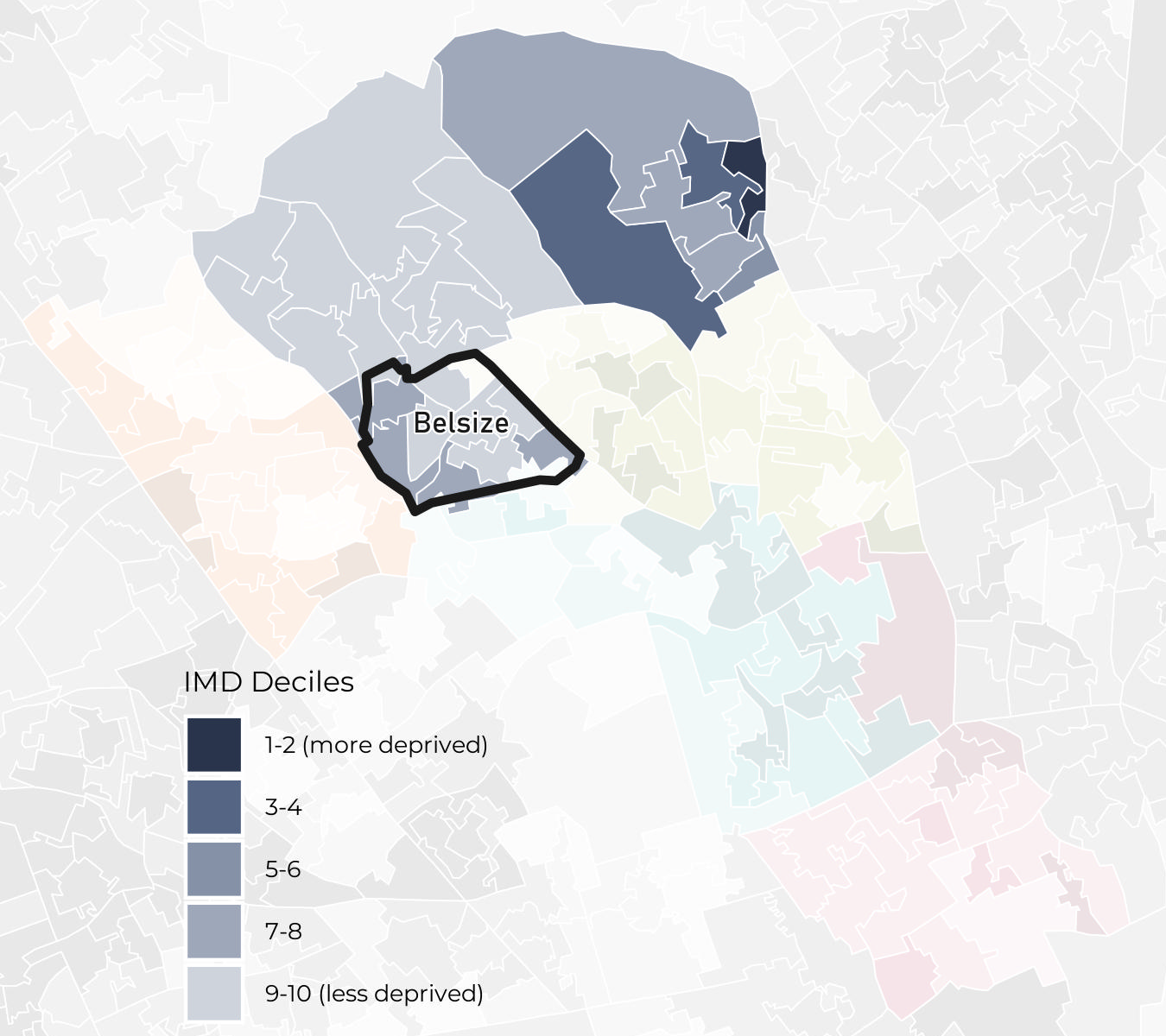
Belsize ward has IDACI (Income Deprivation Affecting Children Index) deciles ranging from decile 4 to decile 10. Note that the least deprived decile is decile 10.
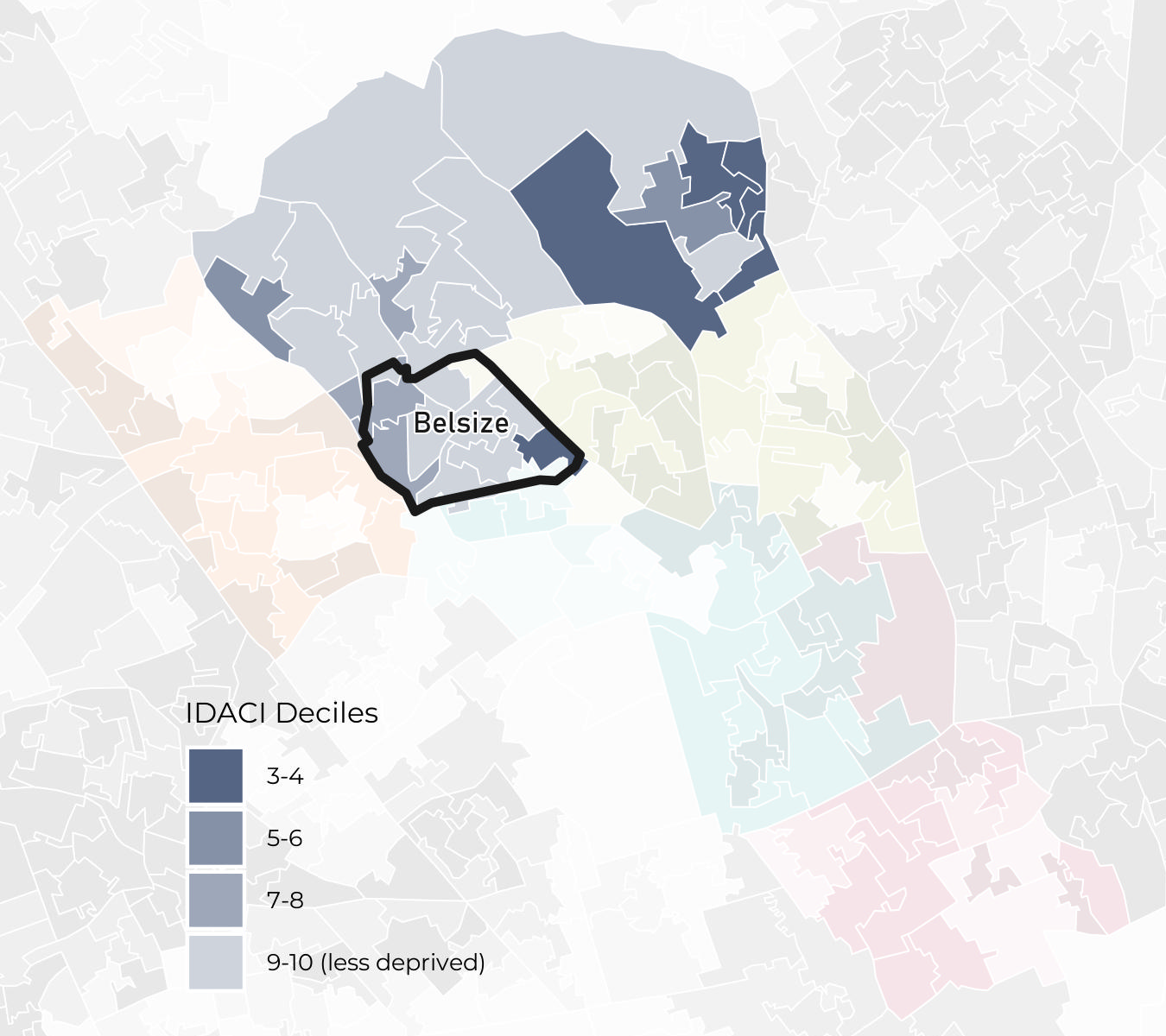
Belsize ward has IDAOPI (Income Deprivation Affecting Older People Index) deciles ranging from decile 3 to decile 9. Note that the least deprived decile is decile 10.
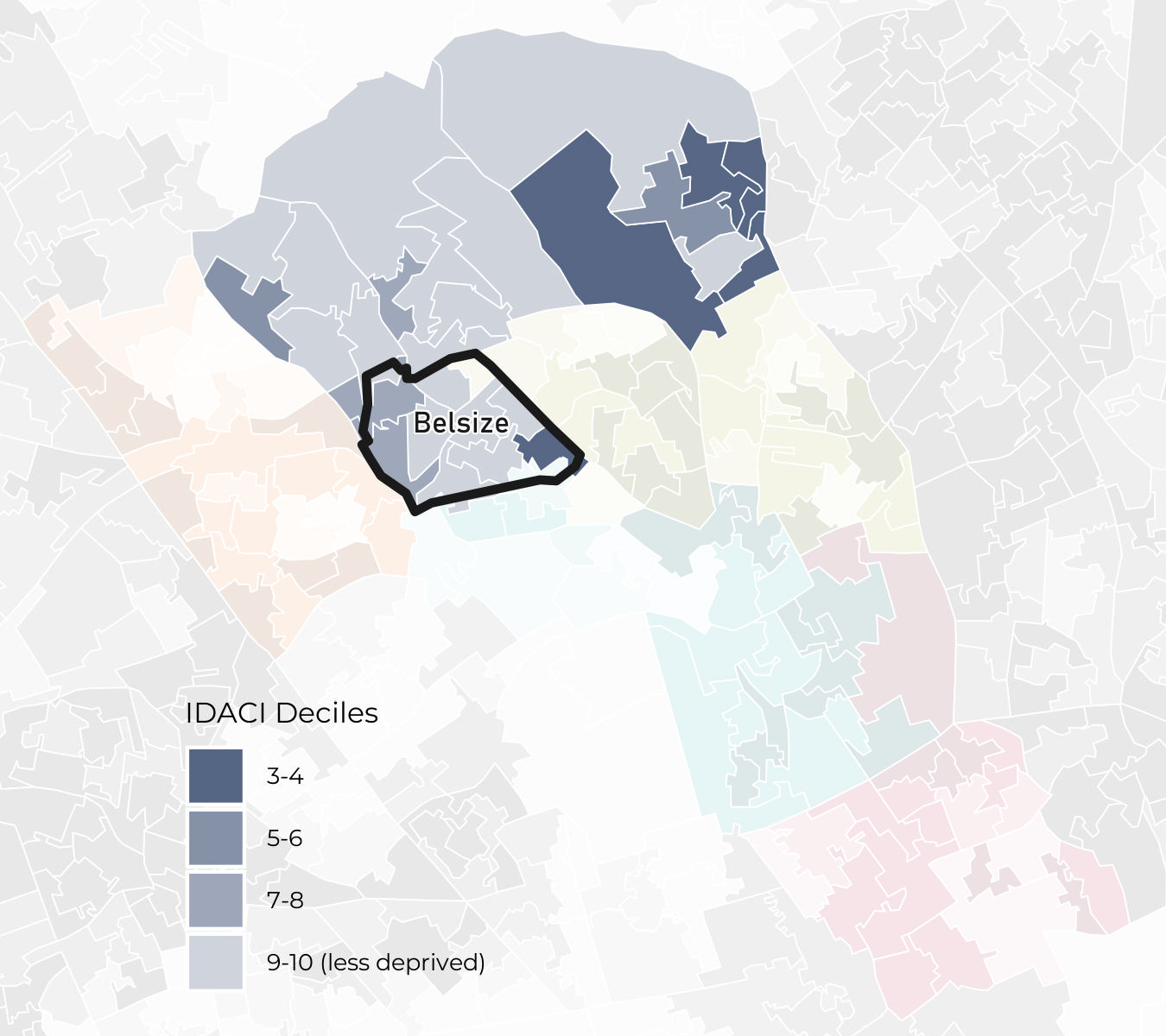
Environment
The place in which we live plays a key role in our health and wellbeing and is an important factor in the wider determinants of health. Access to green spaces and air quality indicators are presented below.
Most Lower Super Output Areas (LSOA) in Belsize sit within Quintile 4 for access to green spaces and within Quintile 3 for air quality.
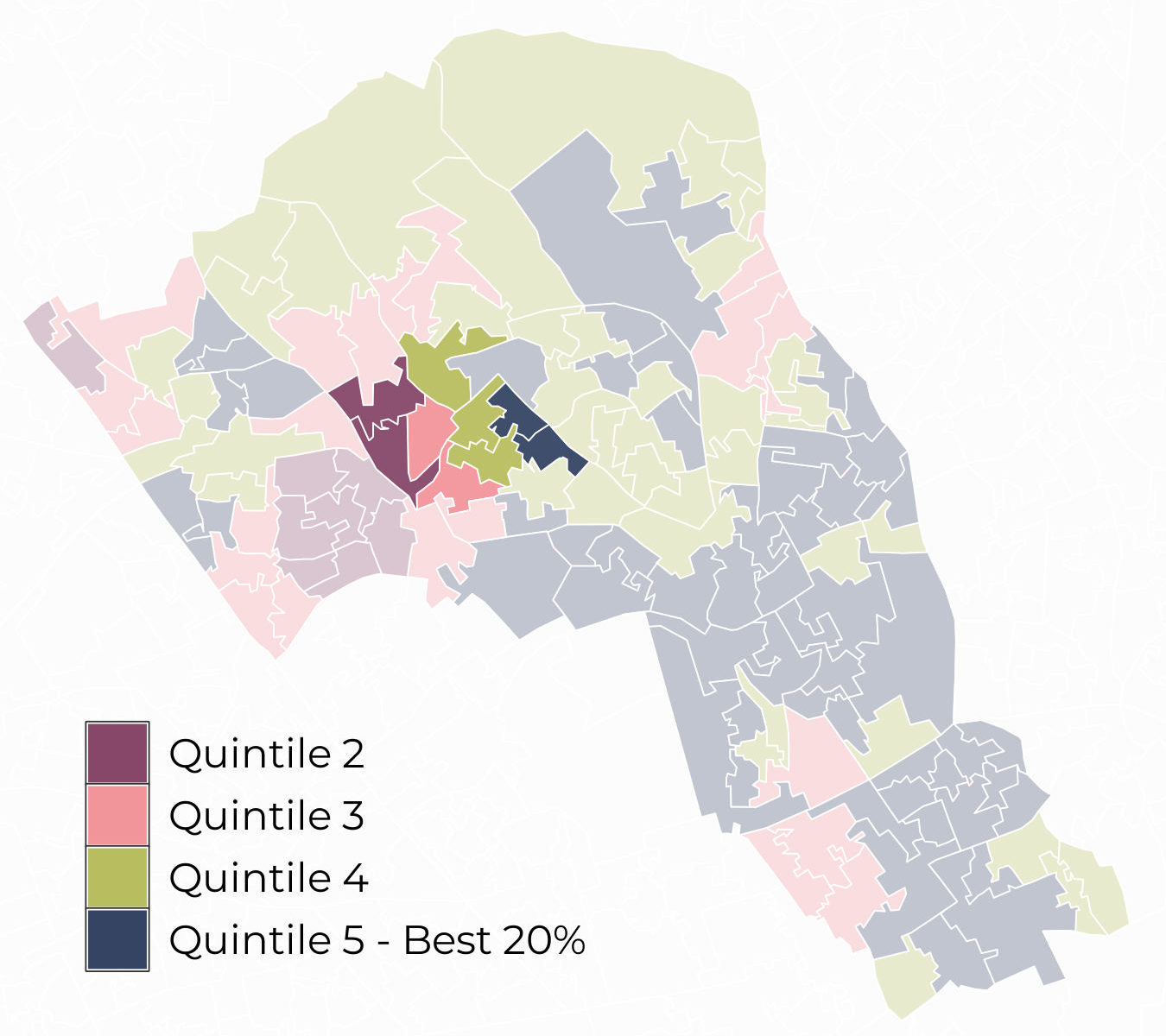
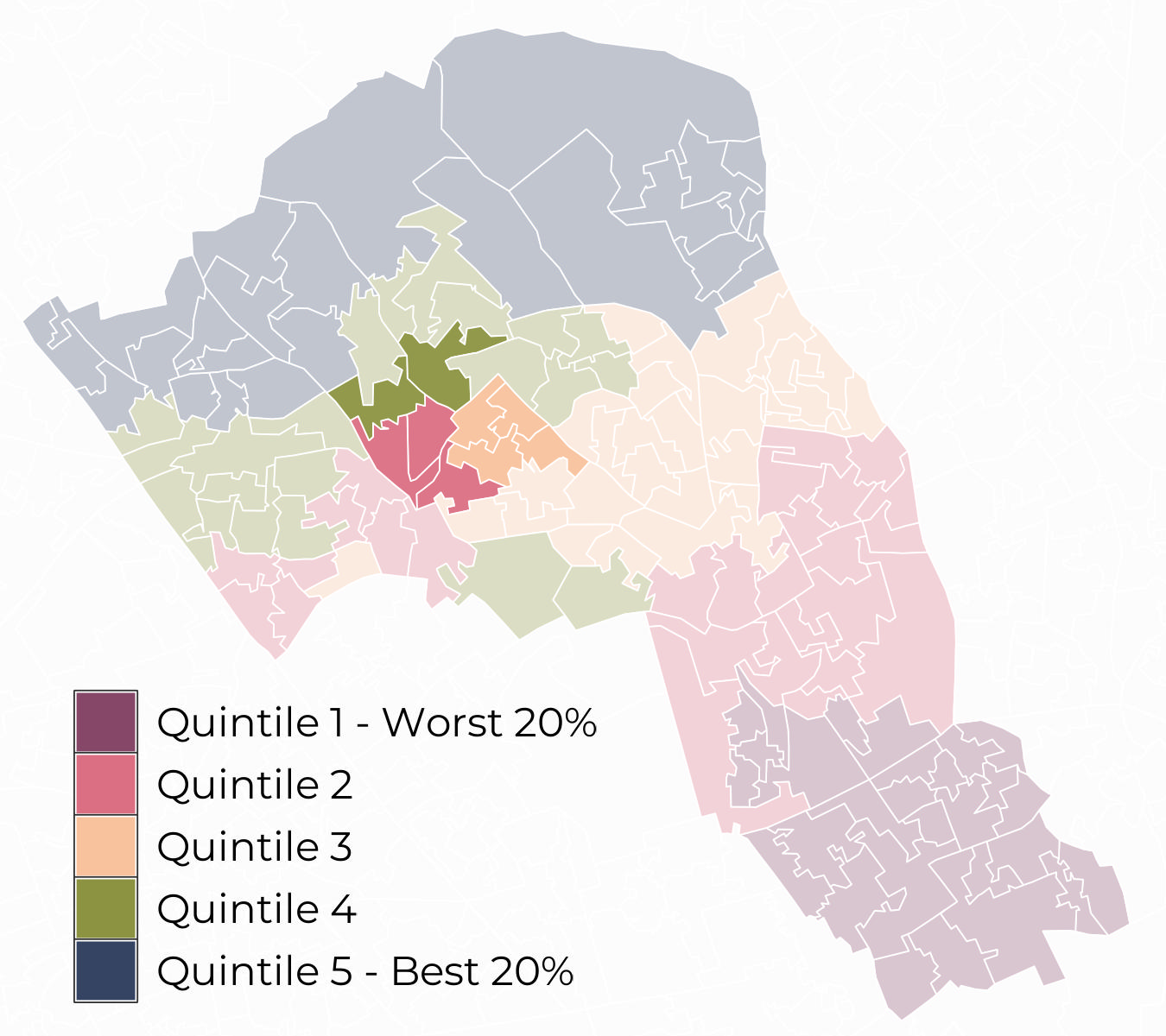
Behavioural risk factors and long-term conditions
Behavioural risk factors
The most prevalent behavioural risk factor in Belsize is Smoking (11.45%). Belsize has a statistically significant lower prevalence of Alcohol Abuse or Dependence, Smoking and Obesity compared to the rest of the borough.
Long-term conditions
The most prevalent long-term conditions in Belsize are Depression (8.82%), Hypertension (7.77%), Cancer (3.06%), and Asthma (2.96%). Belsize has statistically significant higher prevalence of compared to the rest of the borough.
Mental health
In addition to reporting the prevalence of depression and serious mental illness (SMI), the NIHR Small Area Mental Health Index (SAMHI) can be used to examine geographical variation in mental health-related indicators at the LSOA level within the area.
Belsize ward has SAMHI deciles ranging from decile 7 to decile 10. Note that the best decile is decile 10.
